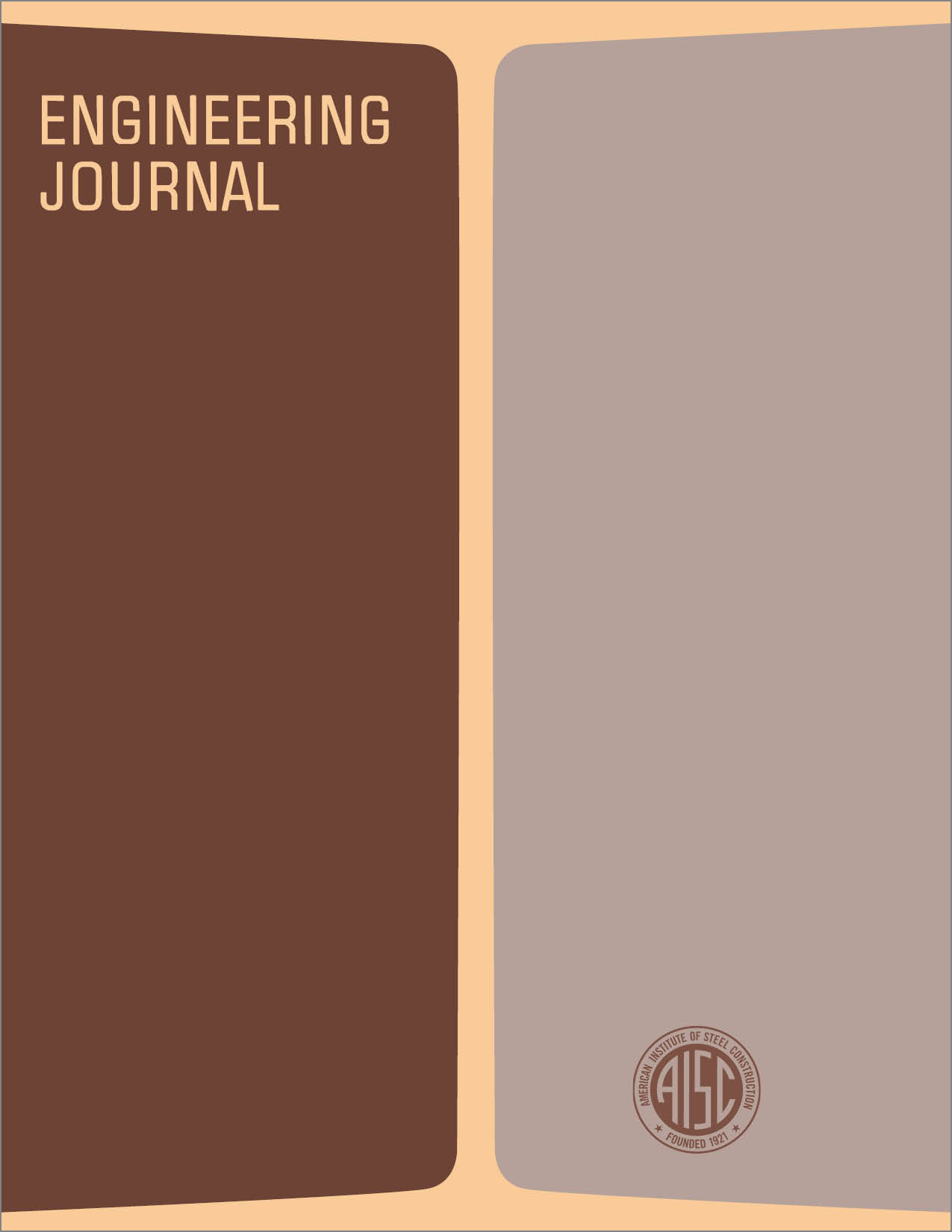New Design Criteria for Gusset Plates in Tension
DOI:
https://doi.org/10.62913/engj.v22i2.441Abstract
Gusset plates are common fastening elements used in fabricated steel structures such as trusses or braced-frame structures. In the latter case, their primary purpose is to transfer either tensile or compressive loads from a bracing member to a beam and column joint. Current gusset plate design is based primarily on elastic analyses for determining critical sections and stresses. No known failures or adverse behavior have been noted, but substantial differences in the factor of safety against ultimate load exist because of the assumptions involved. Therefore, it is important to develop an improved design method, with the goal of providing economy of design and consistent levels of safety. The ultimate-strength approach fulfills these requirements. To date, a few experimental studies have been conducted to determine the behavior and ultimate strength of gusset plate connections. However, additional tests have been needed to develop a design method based on ultimate strength behavior. It is the purpose of this paper to describe a number of gusset plate tests that were performed, and to develop rational criteria that incorporate all of the primary strength parameters.

